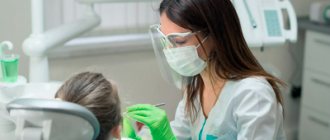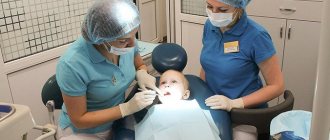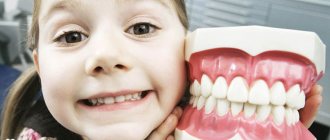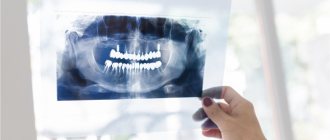Gingivitis: causes and symptoms
In order to know how to treat gingivitis, it is necessary to study at least brief information about this disease and the mechanisms of its occurrence. Gingivitis is a fairly common dental disease, which is an inflammation of the gums, which can be treated with dental ointments and rinses. These rules are similar for the prevention of stomatitis.
The occurrence of gingivitis is often associated with improper oral care, which results in the formation of plaque consisting of bacteria. This sticky substance accumulates along the edges of the gums and in places that are difficult to reach with a regular toothbrush.
In most cases, the causative agents of gingivitis are pathogenic microorganisms that live in the oral cavity of healthy people. The immune system does not allow bacteria to manifest itself, but when it weakens, the virus begins to progress in the body. Among the reasons that can trigger the development of the disease are the following:
- Neglect of dental treatment;
- Poor quality prosthetics and installation of braces;
- Diabetes;
- Viral diseases of the upper respiratory tract;
- Hormonal imbalance, for example, during pregnancy;
- Unbalanced diet, especially lack of vitamins C;
- Nicotine abuse.
Many experts do not consider gingivitis to be an independent disease. In their opinion, the disease develops against the background of other pathologies that contribute to a decrease in the body’s immune defense.
Symptoms of simple gingivitis include swelling and redness of the gums, which may bleed when eating or brushing teeth, and gums often pull away from the teeth. The general clinical picture of the disease looks like this:
- Increased sensitivity of teeth and gums;
- The appearance of dental plaque and tartar;
- Bad breath;
- Swelling;
- Pain and burning when biting;
- Soft tissue necrosis.
There may be no pain, but with acute gingivitis there is already severe pain. In addition, if gingivitis is not treated promptly, complications may develop and numerous ulcers may appear.
The main criteria for the treatment of gingivitis are:
- Complexity
Each specific case requires a number of therapeutic procedures. Both local and general treatment are necessary. Therapy should be aimed not only at relieving symptoms, but also at the causative factors.
- Individuality
The features of the clinical course, associated problems (their presence and nature), as well as factors of local and general defense of the patient’s body (the state of the immune system) must be taken into account.
- Systematicity
Chronic forms of the disease require regular courses of maintenance therapy to bring the disease into stable remission.
Treatment tactics depend, first of all, on the form of the disease. Let us consider in detail the specifics of treatment of three forms of gingivitis. This will help you understand the basic principles of therapy and roughly explain how your dentist will treat gingivitis.
Types of diseases
There are several types of gingivitis, so for effective treatment it is necessary to determine the form of the disease. The following options are possible here:
- Catarrhal. One of the most common forms, which is diagnosed in most patients. The disease manifests itself as bleeding gums and discomfort when pressing on soft tissues.
- Hypertrophic. Usually diagnosed during adolescence. The source of inflammation is located in the area of the front teeth. A characteristic feature of this form of the disease is the proliferation of interdental papillae, and soft tissue hyperplasia is possible.
- Ulcerative-necrotic. This is an advanced stage, which is manifested by acute pain, ulcers in the mouth, and excessive salivation. Patients experience lack of appetite, high fever, and enlarged lymph nodes.
- Atrophic. The most severe form, in which atrophy of soft tissues is observed, the roots of the teeth are exposed. Characteristic signs of this disease are a gray tint of the mucous membrane and bad breath. The patient experiences general weakness and severe pain.
According to the form of its occurrence, gingivitis is divided into chronic and acute. In the first case, the disease does not have pronounced symptoms, there is practically no pain, the gums bleed only when brushing the teeth. In the second, the disease manifests itself more acutely and gives the patient a lot of discomfort.
Vincent's ulcerative-necrotizing gingivitis -
Vincent's ulcerative-necrotizing gingivitis is one of the most severe forms of gingivitis, and its development is accompanied by quite serious symptoms of intoxication of the body. Sometimes the terms “Vincent gingivostomatitis” or simply “ulcerative gingivitis” are also used to refer to it. There are acute and chronic forms of this disease (Fig. 12-15).
Causes of occurrence: critically poor oral hygiene plays a significant role in the development, when there is a significant increase in the mass of microbial plaque on the teeth (especially fusobacteria and spirochetes). Under these conditions, the local immunity of the oral mucosa is no longer able to cope with large amounts of toxins released by pathogenic bacteria. As a result, foci of mucosal necrosis and ulceration occur.
The triggering factor that initiates the development of necrotizing ulcerative gingivitis against the background of poor oral hygiene can be a sharp decrease in immunity or an exacerbation of severe concomitant chronic diseases of the body. But these factors are only predisposing; the main reason is poor hygiene and the accumulation of microbial plaque and/or tartar.
Acute ulcerative-necrotizing gingivitis: photo
Chronic ulcerative-necrotizing gingivitis: photo
Necrotizing ulcerative gingivitis: symptoms and treatment in adults, upon visual examination, you can find that the gums are covered with a whitish or yellowish coating, there are areas of gum ulceration, and some of the gingival papillae are necrotic. In the acute course of the disease, patients complain of high fever, loss of appetite, headaches, putrid breath, bleeding and pain in the gums (Fig. 12-13). In the chronic course of Vincent's gingivitis, the symptoms are less pronounced (Fig. 14-15).
How to cure ulcerative necrotizing gingivitis - treatment is carried out exclusively by a dentist, and urgently. The basis of treatment is the removal of dental plaque, including mandatory scraping of necrotic plaque. Plaque along with dental deposits can be easily removed using a conventional ultrasonic tip (scaler), followed by removal of plaque residues with a curettage spoon. Next, antibiotics, antiseptic rinses, and anti-inflammatory drugs are prescribed.
- Antibiotic therapy - prescribed antibiotics must be effective against fusobacteria and spirochetes, therefore a combination drug of amoxicillin and clavulanic acid, Amoxiclav, is usually prescribed in a tablet.
(for adults - tablets of 500 mg amoxicillin + 125 mg clavulanic acid, which are used 3 times a day - during the first day of the disease, and 2 times a day for the next 6 days). In parallel with Amoxiclav, you need to take the antibiotic Trichopolum (Metronidazole) - 500 mg 3 times a day, for a total of 7 days. In parallel with this, you should use antiseptic rinses with a 0.2-0.25% chlorhexidine solution, as well as a gum gel, for example, Cholisal.
Important: the use of antibiotics and antiseptics for self-medication (without removing deposits and necrotic plaque) will lead to the transition of acute necrotizing gingivitis to a chronic form. As a result, you will get gradual increasing necrosis of the gums, exposure of the roots of the teeth, as well as constant intoxication of the body. Therefore, an urgent visit to the dentist and removal of dental plaque is mandatory! After inflammation subsides, agents are prescribed that accelerate the epithelization of the mucous membrane, for example, Solcoseryl Gel.
Why is it important to see a doctor?
When the first signs of gingivitis appear, you should immediately contact a qualified dentist or periodontist. This is necessary in order to confirm the diagnosis. In terms of external signs, gingivitis resembles periodontal disease or periodontitis, however, there are significant differences between these ailments.
Treatment of gingivitis is carried out according to a single scheme, regardless of the cause of the disease. Treatment usually takes place in two stages: oral hygiene (performed by a dentist) and local rinsing with antiseptic solutions.
In particular, gingivitis affects only the gums, without affecting the bone tissue. With periodontal disease, the picture is the opposite: the teeth begin to loosen, while practically no inflammation is observed in the gums. However, only an experienced doctor can determine this difference. After confirmation of the diagnosis, a treatment regimen is prescribed.
Important! The doctor must be truly experienced. In case of periodontal disease, potentially dangerous teeth are removed. With proper treatment of gingivitis, teeth are usually preserved.
Treatment of ulcerative gingivitis
Therapeutic measures should be aimed at eliminating the inflammatory process, increasing the patient’s body’s resistance to microbes, and preventing the influence of local factors that provoke necrotizing ulcerative gingivitis. Let's consider the main stages and principles of the treatment.
- Professional oral hygiene.
- Antibacterial and anti-inflammatory therapy.
- One of the features of the treatment of necrotizing ulcerative gingivitis is the removal of necrotic areas of tissue; Hydrogen peroxide and chlorhexidine are usually used.
- The use of keratolytic agents, vitamins, adaptogens.
- Training in the rules of proper oral hygiene, as well as monitoring hygienic skills.
- One of the features of the ulcerative form of the disease is severe pain, therefore the treatment of gingivitis, due to the difficulty of carrying out normal hygienic care, is accompanied by the use of antiseptics and anti-plaque agents.
- Elimination of factors contributing to the formation of plaque on the surface of teeth.
- Elimination of the problem that aggravates the proliferation of microorganisms and their pathogenic effects.
Diagnostics
Diagnosis of gingivitis is carried out in several ways, which are used in combination. At the initial stage, the doctor collects anamnesis:
- The diet and bad habits are revealed;
- The reasons for tooth extraction/loss are clarified;
- Genetic predisposition is determined.
After this, an examination of the oral cavity is carried out, the depth of the dental canals is studied with a special probe. Additional methods of diagnostic testing include x-rays and testing the sensitivity of the pulp.
The following methods can be used to diagnose gingivitis:
- Fedorov-Volodkina index;
- RMA index;
- Schiller-Pisarev test.
Treatment of gingivitis at home
Treatment of gingivitis at home is possible, but only if certain rules are followed. This is a serious disease that you cannot fight on your own. Even those drugs that have helped your friends may, at best, be ineffective, and at worst, cause complications. Therefore, treatment must be prescribed by a doctor. Even folk remedies should be used only with the permission of the dentist. Let's look at the most effective methods for treating gingivitis in adults at home.
Gels, ointments and compresses
Therapeutic ointments have antimicrobial and anti-inflammatory effects. They quickly relieve pain, eliminate bleeding, and reduce swelling. To treat gingivitis at home, dentists usually prescribe ointments and gels:
- Metrogil Denta. An antimicrobial agent containing an antiseptic and antibiotics. Thanks to its gel-like texture, the drug is convenient for self-use and has no contraindications. Not recommended for use in children under 6 years of age or during the first trimester of pregnancy.
- Asepta. A fast-acting drug that relieves pain and eliminates bleeding gums. It is not an independent means of treatment, therefore it is used only in combination with other medical procedures. There are no identified contraindications, but individual intolerance to individual components is possible.
- Solcoseryl. Homogeneous gel intended for external use. It has a wound-healing effect, stimulates the regeneration of soft tissues and mucous membranes.
- Holisal. Pronounced antimicrobial effect with analgesic effect. It has no age restrictions for use and is included in complex therapy in the treatment of gingivitis and other diseases of the oral cavity.
- Apident. Made from beekeeping products, it fights bleeding gums, soothes the mucous membranes, and destroys pathogenic microflora.
Rinse
Mouth rinsing is more related to the prevention of gingivitis, but in order to eliminate this disease as quickly as possible, doctors often include such therapy in the treatment complex. The most effective rinses include:
- Chlorhexidine;
- Furacilin;
- Furamistin;
- Miramistin;
- Rotokan;
- Chlorophyllipt.
Rinsing is done after each meal or throughout the day, at regular intervals. Depending on the concentration of the active substance, solutions can be used in pure form or need to be diluted with water. Information about this is indicated in the instructions for use.
Irrigators with rinsing for gingivitis
Irrigators are ideal for gingivitis, when the gums are inflamed, bleed and react painfully to any touch. The device directs a stream of water under pressure, which allows you to efficiently clean even hard-to-reach areas of the oral cavity. The jet pressure can be adjusted, which reduces pain to a minimum, and instead of water, medicinal solutions can be used. The following liquids are suitable to combat gingivitis:
- PerioGard;
- Donfeel;
- Peridex.
The listed drugs contain medicinal components that stop inflammatory processes in the gums and destroy pathogenic bacteria. The advantage of the irrigator is its gentle effect on infected surfaces: unlike toothbrushes, such devices do not injure the gums.
Vitamins
An additional effect that helps the body resist the disease. For gingivitis, vitamins of groups C, P and PP are usually prescribed. They are contained in ascorbic acid, Quercetin and Ascorutin.
Medicines
Medicines are usually prescribed in complicated or advanced cases of oral lesions. These are antibiotics or antimicrobial agents that should be taken only on the recommendation of a dentist.
Help to cope with gingivitis:
- Maraslavin;
- Novoimanin;
- Salvin.
Decoctions (folk remedies)
When figuring out how to treat gingivitis at home, you cannot skip traditional medicine. These are decoctions based on medicinal herbs and plants that help against inflammation and increase healing.
Medicinal decoctions against gingivitis:
- Sage;
- Calendula;
- Chamomile;
- Oak bark.
Even before using these products, it is better to consult with your doctor. Some herbal components are not compatible with medications, which can lead to undesirable consequences.
Features of gingivitis in children, adults and pregnant women
In general terms, gingivitis occurs in the same way for everyone, only the treatment methods differ. Adults are prescribed drug therapy, including antibiotics. The course lasts 10 days, medications are taken orally or administered intramuscularly.
Children are given antibacterial therapy and immunomodulating drugs are prescribed. In addition, the mucous membranes of the oral cavity are treated with decoctions of medicinal herbs and special gels.
Pregnant women are prescribed vitamins and safe antiseptic drugs. Antibiotics are completely excluded, but removal of tartar and plaque is mandatory.
Simple ways to get rid of a difficult disease: prevention of gingivitis
The best and main method of prevention is compliance with oral hygiene measures.
Personal hygiene
Regular and high-quality teeth brushing (at least twice a day). It is important to know how to choose the right toothbrush; its bristles should not injure the gums, but at the same time remove plaque well. And also use the toothpaste that is suitable for you.
Brushing your tongue is an important part of oral hygiene and should be cleaned as often as your teeth.
It is necessary to use a mouthwash whose antiseptic properties kill most known microorganisms. It is advisable to use it after every meal.
Cleaning the interdental spaces with dental floss at least once a day. It helps remove all food particles that the toothbrush cannot reach, thereby preventing plaque from accumulating in between the teeth.
If you are the owner of dentures, veneers, crowns or implants, then you cannot do without an irrigator. It perfectly cleans the surface of artificial structures, as well as the joints between them and natural teeth.
Visit the dentist every six months
In addition to the consultation appointment, the periodontist will, if necessary, perform professional teeth cleaning. It includes:
- removal of hard dental deposits and soft plaque from tooth surfaces. This cleaning can be carried out using ultrasound or an Air Flow device;
- polishing teeth with a special paste that prevents tartar deposits. In addition to the polishing effect, it has the property of remineralizing tooth enamel, as it contains calcium and fluoride;
- carrying out medical applications on the gums with an antiseptic solution.
Following these really simple methods will help you avoid a whole host of gum and dental problems.
Cure gingivitis is the last opportunity to stop the serious process of inflammation of periodontal tissues - periodontitis, which leads to the loosening of healthy teeth and their loss. In addition, treatment of periodontitis is much more difficult and less effective. Therefore, if you have the slightest problem with your gums, do not forget to see a doctor.










